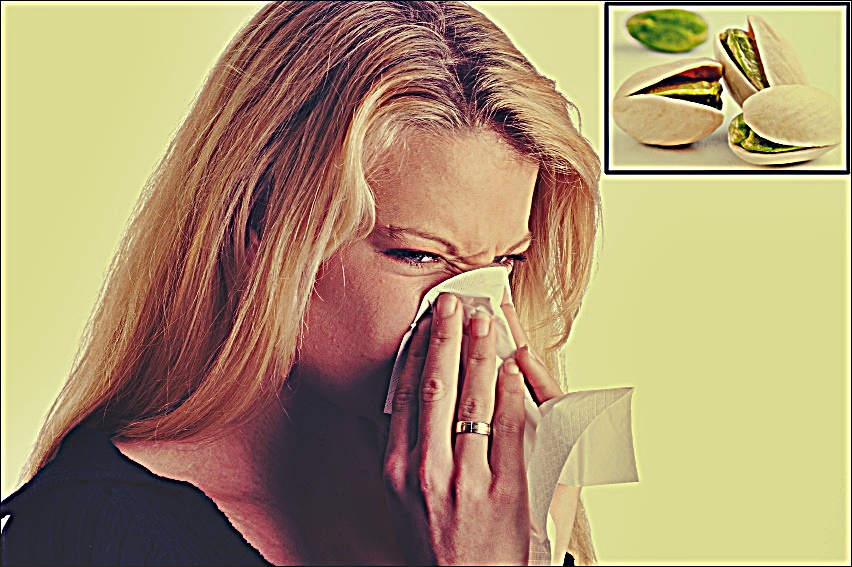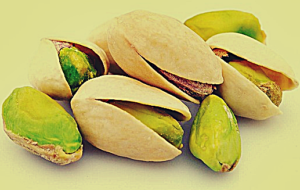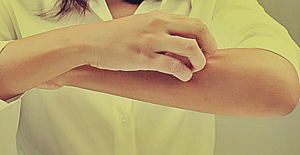Pistachios are small, edible, green-colored tree nuts. They belong to the family of mango nuts just like cashews. Pistachio trees typically grow in the hilly areas of Asia and in California and Australia.
Pistachio allergy typically forms during early childhood and tends to persist for the patient’s lifetime. The symptoms of pistachio allergy may occur after contact with even very little amounts of the nut.
The most common symptoms experienced by affected individuals are itchiness and skin rashes. In other cases, patients may suffer from sneezing, watery and itchy eyes, coughing, hives, nausea, diarrhea, gastrointestinal problems, and asthmatic problems. In severe cases of pistachio allergy reactions, such as anaphylaxis, patients may exhibit breathing issues, facial swelling, throat swelling, and chest tightness.
Symptoms of Pistachio allergy
Pistachio allergy symptoms typically occur about 2 hours after exposure to the nut. A few common signs and symptoms are listed below:
- Affected people may suffer from different kinds of upper respiratory system problems.
- The throat may become itchy and cause coughing or an increased craving to cough.
- Patients may experience itchy and watery eyes. Dark circles may form under the eyes.
- Tingling sensations may be felt on the lips and tongue
- There may be runny nose due to inflammation of the sinuses. Sneezing may also occur.
- Pistachio allergy may cause different kinds of skin problems, the most common of which are eczema and hives.
- Eczema is a type of rash on skin which is marked by inflamed skin, red blotchy skin, itchy skin, and formation of small raised bumps which may leak and later develop a scab. The abnormal symptoms typically develop on the arms and behind the knees. Eczema is also referred to as atopic dermatitis.
- Hives are raised, itchy, reddish bumps or welts that develop on the skin. The lumps can alter shape, vanish from one part of the body and later form in another region in a matter of minutes or some hours. Hives caused by pistachio allergy reaction may also spread to other parts. The size and number of bumps that form are dependent on the severity of the reaction. Hives typically form on the abdomen, hands, back, near mouth, and other body areas.
- Patients may suffer from gastrointestinal problems such as pain in stomach, diarrhea, abdominal cramps, etc. There may be nausea which may then result in vomiting out the pistachio nuts.
- Allergic reaction to pistachios may cause asthmatic symptoms. Asthma patients with pistachio allergy have a greater risk of experiencing asthmatic symptoms after exposure to the nut. Affected people may suffer from tightening in chest and throat, shortness of breath, difficulties in breathing, wheezing, and coughing. Asthma attacks caused due to allergic reaction to pistachio can be incapacitating and severely hamper a patients daily routine.
- People with extreme allergic reactions to the nut may suffer from
- Dizziness
- Swelling of the face, tongue, and lips
- A swollen throat which can narrow the airways
- Serious respiratory issues
- In rare instances, people may have a life-threatening reaction called anaphylaxis after intake of pistachios. This condition is severe and requires emergency medical care. Affected people will exhibit symptoms like trouble breathing, reduced attention, swelling up of airways, increased heart rate, anomalous heart rhythms, reduced blood pressure, shock, confusion, and fainting or loss of consciousness.
Causes of pistachio allergy
An allergic reaction is an adverse response of the immune system to different kinds of allergens that are present in drugs, foods, insect poison, pollen, dust, etc. Human beings are allergic to varied food items, including shell fish, milk, eggs, tree nuts, peanuts, etc. The proteins present in these foods get misidentified by the immune system as being dangerous for the body thereby causing it to attack the proteins and resulting in an allergic reaction.
Immunoglobulin E or IgE antibodies are secreted by the immune system to fight off invaders and protect the body. Histamines and other chemicals which are released by the antibodies play a main role in occurrence of the allergy symptoms. Different individuals experience varied forms of reactions with varying degrees of intensity. One patient may also suffer from different symptoms during varied episodes of allergic reactions.
- The exact cause of pistachio allergy is not known. In most cases, it is present from birth.
- People with a family history of allergic disorders and/or conditions like asthma and eczema are at greater risk to development of pistachio allergy.
- Patients usually get exposed to pistachio by accidently eating it. Pistachio allergy reaction may also occur due to inhalation of particles of the nut. The particles may get released into the air while processing, cooking, or crushing the nuts in factories that make products with pistachio in them.
- Smelling or touching pistachio typically does not cause allergic reactions. It however does happen in very rare cases.
Pistachio allergy – Cross Reaction
Several people with pistachio allergy do not have allergy for other types of tree nuts. However, due to high cross-reactivity with other nuts, some patients may also experience allergic reactions to other tree nuts. The cross-reactivity of pistachio is the strongest with cashews, but it can also be with other nuts. Individuals with pistachio allergy are therefore advised to avoid eating all kinds of tree nuts.
Tree nuts and peanuts do not have any biological connection as the latter is a legume. But there is high cross-reactivity of tree nuts with peanuts and hence affected people should avoid eating peanuts as well.
Treatment of pistachio allergy
There is no cure for pistachio allergy. Treatment is aimed at alleviating the symptoms.
- Mild case of eczema can be treated with anti-itch creams, hypoallergenic lotions, and topical antihistamines
- Mild hives vanish without medications. Harsh or tight clothes, baths, and showers need to be avoided so as to ease itching. Antihistamines can also help reduce swelling and itchiness.
- Topical steroids will be prescribed for severe symptoms.
- People who experience anaphylaxis as a symptom of pistachio allergy need to always carry epinephrine with them. It needs to be injected immediately after the allergic reaction before emergency medical care is sought.



